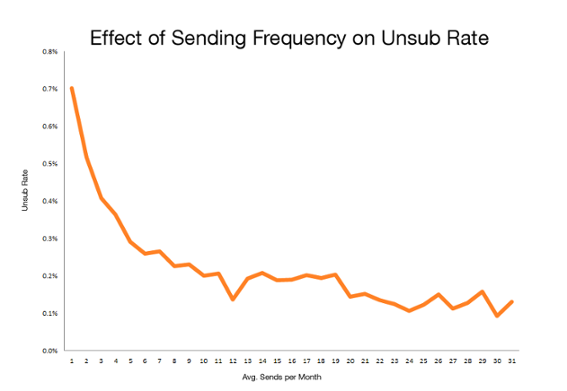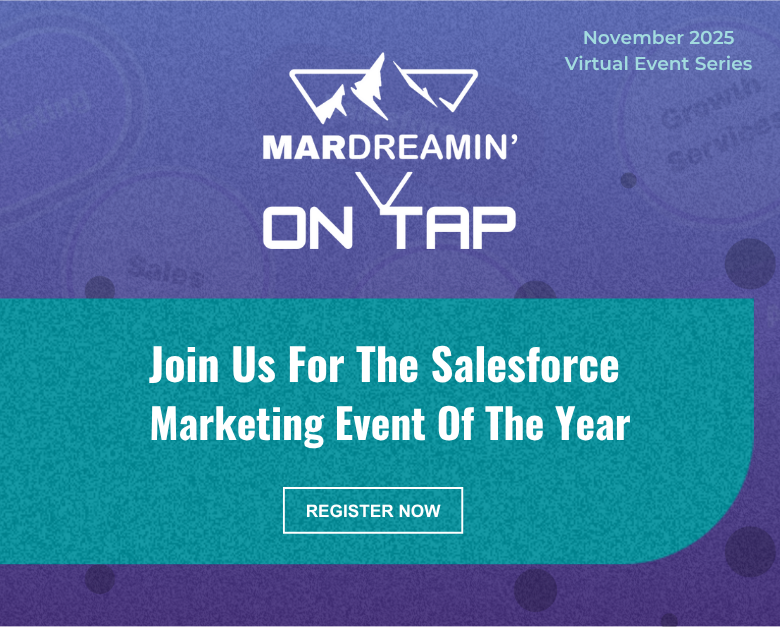“How do I know if I’m emailing people too much?”
…is one of the frequent concerns I hear when people are ramping up email marketing and/or launching a new program.
My rule of thumb for 98% of people: take the amount that you think you should be emailing your subscribers, 5-10X that, and that number is probably about right.
Always remember… that no one cares
As marketers, we think a lot about our content, creative, strategy, yada yada — everything that fuels our email marketing. Our customers don’t think about it that way. When they’re looking at their inboxes, they’re thinking to themselves:
“How do I delete as many emails as possible so I can focus on what I really need to do?”
That’s literally how I start every day. I pick up my phone from the nightstand, squint at it with one eye, click ‘edit’ on my iPhone, and multi-select as many emails as possible to delete.
Betcha you have a similar routine. Let’s all take a moment of silence for the brilliant, stunning, strategic email campaigns that failed the one eye 5 a.m. test.
What the data tells us Re: Too Much
Anecdotally, people unsubscribe from emails because of volume.
If you offer people the opportunity to tell you why they’re unsubscribing, the biggest reason cited is “too many emails.” (69% of the time, according to Constant Contact.)
If you ask sales for their opinion on how many emails you’re sending… well, just don’t.
Does the data support the idea that “too much of a good thing” will hurt you?
CMB Consumer Pulse did a study on MailChimp’s data to see how frequency correlates to unsubscribe rate. And actually…. it doesn’t really.

Image Source
This data shows that higher volume of email sends don’t send people flocking to your unsubscribe link.
A better visualization would probably be the percentage of subscriber churn over time. But you get the idea.
An even better plan: Look at your own data
Try increasing your email frequency and see what happens. ReturnPath did a really interesting study with a few of its customers where it split subscribers into three tiers of engagement and looked at impact of frequency on each.
As a mini experiment: send 2X the amount of email you usually send for the next 30 days. Do unsubscribe rates spike?
Beyond the per email metrics and unsubscribe rate, what is the total number of clicks, opens, and unsubscribes you’re driving across all of your efforts?
If there IS an increase in subscriber churn, and opt outs “spike” from… let’s say .5% to 1.5%… is that hit to the metrics worth the tradeoff to drive more traffic?
More of the same can be a good thing [a client example]
With many of Sercante’s clients, we’ve started re-sending all emails 24 hours after the initial send to anyone who hasn’t opened it. As a rule of thumb, we expect 50% of the results of the first send for send #2.
At first, I was really resistant to doing this. I’m competitive, okay? And it’s a bummer to see a client with consistent 35%+ email open rate get 17% on a resend. It takes our overall stats down. Lame.
But if email #1 drives 20K opens, and 2K clicks… is it worth the 180 seconds it takes to queue send #2 and drive another 1K people to the client’s website?
Think about that for a second. In this client example, A THOUSAND PEOPLE cared about their message enough to click through on round two. If we didn’t send email pass #2… I think it would be fair to say that we weren’t emailing people enough.
5 quick tips if your Too-Much-O-Meter is still tingling
Still worried about emailing people too much?
Really, you’re probably not emailing people too much. And you’re missing opportunities to build awareness, generate leads, and nurture pipeline if you’re not optimizing the volume of emails you’re sending.
But if you’re still concerned, here are a few thoughts on how you can mitigate:
- Gradually ramp up volume over time. If you’re sending weekly, try 2X weekly.
- Give people the option to selectively unsubscribe using an email preference center.
- Target your lists as narrowly as possible so that you’re only emailing people about things they care about.
- Use a GDPR-compliant double opt in process to ensure you have a confirmed, engaged, squeaky clean list.
- Use recency/frequency suppression lists, and suppress recipients in active Engagement Studio programs to stagger what people see when (more to come on this in a later post.)
The bottom line: Share good content, and do it a lot
Don’t worry about emailing people too much.
Worry about creating awesome content. Worry about emailing the right people, at the right time, with the right message. Worry about growing your list in a healthy (or at least hand wavy healthyish) way.
Frequency? Nah, bro.










I like the idea of having a second bite at the same email for those who didn’t open it – but what do you do for tracking blockers, where pardot now can’t see whether or not it was actually opened. We could be sending duplicate content to someone who did actually open and engage with it.
An excellent consideration. And I think the ever-annoying answer is “It Depends”. You will need to do a value assessment. This assessment may be for each email or program, depending on the audience and the content.
If you know certain recipients use this tech, create a suppression list for this group and suppress just the duplicate emails, or every other repeat, etc. Do a check to see if they are on the list and skip the email if they are. Certain industries (tech/medical/security) or company sizes (fortune 100) may be more likely to use the tech, so maybe exclude those segments from the duplicates.
Do click tracking as an additional test. Be aware that there are firewalls that follow links – zScaler for one, so this also isn’t a sure signal.
Assume that if they visited your website since the email send, they read your email and so squelch the duplicates if they are recently active on the website.
Change up the duplicate sends a bit. A lot of work, but if it’s in a long living engagement studio program, it could be worth the effort. This gives you a built in A/B test. If the repetitive email is getting a better open rate, maybe swap the order and send it first. Maybe the order really needs to be that way to get the lift in the later email because people see the prior subjects and skip them, but the later subject line is now really compelling because of what they saw first.
People kinda have a half expectation of marketing departments to be a bit annoying. If the email is written to look like it was coming from a human, be extra conservative with the repeat sends. We don’t want to make our named people look dumb or desperate. Anonymous marketing departments, OK, but not our people.
You can always try alternative methods to email to get that 2nd chance. CRM remarketing for example, instead of sending a second or third email, display ads to those addresses.